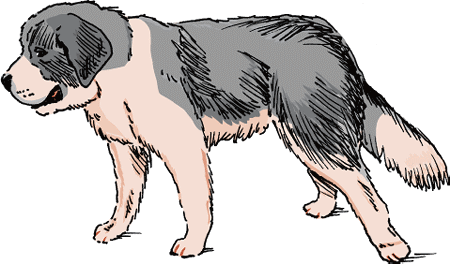Leg Paralysis in Dogs
- Brain, Spinal Cord, and Nerve Disorders of Dogs
- The Nervous System of Dogs
- Parts of the Nervous System in Dogs
- Nervous System Disorders and Effects of Injuries in Dogs
- The Neurologic Evaluation of Dogs
- Principles of Therapy of the Nervous System in Dogs
- Congenital and Inherited Disorders of the Nervous System in Dogs
- Disorders of the Peripheral Nerves in Dogs
- Disorders of the Spinal Column and Cord in Dogs
- Dysautonomia in Dogs
- Facial Paralysis in Dogs
- Central Nervous System Disorders Caused by Parasites in Dogs
- Leg Paralysis in Dogs
- Meningitis and Encephalitis in Dogs
- Motion Sickness in Dogs
- Rabies in Dogs
- Tick Paralysis in Dogs
Also see professional content regarding limb paralysis.
Paralysis of a leg often results from damage to the peripheral spinal nerves. Paralysis of a front leg is usually associated with injury to the nerve roots in the neck or shoulder, or injury to the radial, median, or ulnar nerve in the leg. Paralysis of a hind leg is usually associated with injury to the nerve roots in the lower back or tailbone, or the femoral, sciatic, peroneal, or tibial nerve in the leg.
The animal’s posture and gait, spinal reflexes, pain sensation, and the condition of the muscles in the affected limb are evaluated to identify the location of the injury. The closer a nerve injury is to the muscle, the better the outlook for recovery, so it is important to determine the exact location of the injury. The ability or inability of the animal to flex the joint and bear weight on the leg, and the presence or absence of pain sensation and reflexes at various places in the leg, depend on the site of the nerve damage. Within a few days, muscles wither and lose mass because of the lost nerve connection. Electrical stimulation of the nerve can be used to determine whether the nerve is partially intact. Nerves regenerate slowly (about 1 inch per month), and full functional recovery depends on the condition of the nerve sheath and on the distance between the injury and the muscle where the nerve ends. Some nerve injuries can resolve after several weeks or months; however, when total nerve rupture occurs, surgical reattachment is required for regeneration.
If an abnormal eye condition known as Horner’s syndrome (pupils small, eyelid partially closed, and third eyelid elevated) is present on the same side of the body as a paralyzed front leg, then the nerve roots have been torn and the chances for recovery are minimal. If Horner’s syndrome is not present with front leg paralysis, the outlook for recovery may be better.
Applying heat, performing massage, and stretching tendons should be done as directed by your veterinarian to keep muscles, tendons, and joints of a paralyzed leg healthy while the nerve is regenerating. A light, but not tight, bandage may prevent damage to the foot from dragging. If the leg drags on the ground, it can be held up with a sling or amputated to prevent damage to the paw. Three-legged dogs generally have a good quality of life.
No specific therapy is available to help nerve regeneration. Acupuncture may help recovery. If voluntary movement, pain sensation, and spinal reflexes improve over 1 to 2 months, the outlook for recovery is good. An Elizabethan collar may be needed to prevent the dog from chewing on its leg. If the nerve injury is suspected to be permanent and the animal is chewing the leg, amputation may be the best option.
Paralysis from Tumors
Tumors affecting nerves can cause a chronic, often painful lameness or weakness of a front or hind leg that worsens over time. Tumors can be identified using computed tomography (CT) or magnetic resonance imaging (MRI) scans. Surgical removal or biopsy of the tumor is necessary to determine the diagnosis and the chance for recovery.
Nerve sheath tumors are common in dogs, and they often affect multiple nerves. These tumors are difficult to completely remove. The outlook for recovery is usually poor.
For More Information
Also see professional content regarding limb paralysis.
Resources In This Article
- Brain, Spinal Cord, and Nerve Disorders of Dogs
- The Nervous System of Dogs
- Parts of the Nervous System in Dogs
- Nervous System Disorders and Effects of Injuries in Dogs
- The Neurologic Evaluation of Dogs
- Principles of Therapy of the Nervous System in Dogs
- Congenital and Inherited Disorders of the Nervous System in Dogs
- Disorders of the Peripheral Nerves in Dogs
- Disorders of the Spinal Column and Cord in Dogs
- Dysautonomia in Dogs
- Facial Paralysis in Dogs
- Central Nervous System Disorders Caused by Parasites in Dogs
- Leg Paralysis in Dogs
- Meningitis and Encephalitis in Dogs
- Motion Sickness in Dogs
- Rabies in Dogs
- Tick Paralysis in Dogs






